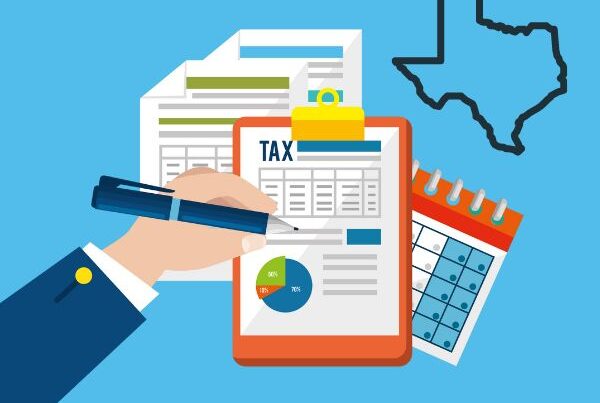Accounts payable (AP) fraud happens, but there are ways to reduce your risk of fraud happening and limit your company’s financial loss. We wear seat belts because car accidents sometimes happen and put us at risk of getting injured. Likewise, we protect ourselves and our businesses when we learn to recognize the signs of accounts payable fraud and implement good internal controls. You might be thinking to yourself “That will never happen to me!”. News flash, most people who have been victims of fraud probably felt that way too, and small businesses are the most common victims of embezzlement and fraud. It’s not enough to get into the car and hope that everyone drives safely and doesn’t get distracted. It’s our responsibility to plan and prepare for the possibility that things could go wrong.
We have personally worked with companies that have been defrauded both internally and externally before they worked with us. In every case, the fraud happened in accounts payable processes. Some of these fraud schemes have involved creating payments to fictitious vendors, billing for products never sent or received, and reporting fictitious expense reimbursements. In some cases, our clients lost hundreds of thousands of dollars before uncovering the fraud. We’ve seen how our clients were impacted before they uncovered the fraud and how it almost put them out of business.
So, here are some ways to create an environment where things have a better chance of going right.
What Exactly is Accounts Payable Fraud?
Accounts payable is money your business owes to its suppliers (and creditors). It can be the result of inventory you bought on credit from a supplier, services you hired a vendor for, or simple things like utilities or rent. It shows up as a current liability on a company’s balance sheet.
Within the accounts payable function, expenses are authorized, checks are cut, credit cards are used, and wire transfers are sent. Most of the money that moves out of your business is part of your AP processes. Many early business owners handle all this themselves to keep the risk low but eventually this takes up too much of their time and they must allow others to help with this process. This puts them at risk for accounts payable fraud.
In addition, the largest expenses of a business go through accounts payable. This makes it a significant fraud risk from inside and outside your business. Accounts payable fraud is when somebody in a company or outside of it uses the accounts payable process to steal from a company.
Why Accounts Payable Fraud Could Ruin You
Fraud can pose a huge threat to any company. Large and small companies alike, (although small businesses lose twice as much to fraud schemes), have faced bankruptcy and financial ruin. They have lost their reputation, employees have lost their jobs, and investors have lost their investments. All because fraud wasn’t detected in time.
According to the 2018 Report to the Nations on Occupational Fraud and Abuse, conducted by the Association of Certified Fraud Examiners (ACFE), check tampering, billing, and fraudulent expense reimbursements – the three main types of AP fraud – accounted for nearly half of all reported fraud cases. Additionally, examiners found that in 2018, fraud cost businesses a median amount of $130,000 per business and took a median amount of 16 months to be detected. During that time there were upwards of $7 billion in losses due to fraud, and 22% of fraud cases caused losses to companies of over 1 million dollars.
What Can You Do?
If it’s already happening, learn to identify it, and stop it
There are three key ways you can be proactive in finding fraud within your company:
1. Be mindful of your employees
Be aware of employees who aren’t happy about their work situation. If they feel like they aren’t getting the pay or recognition they deserve they may resort to stealing from your company. Because in most cases the fraudster doesn’t have a prior record (only 4% had a prior conviction), it’s important to recognize the signs that something could be wrong. More than 85% of AP fraud cases involve an employee who displayed one of these behaviors: (a) Living beyond their means (spends more than they should with their current income). (b) Unusually close relationship with vendor/customer. (c) Financial difficulties (recent divorce, bankruptcy, debts, gambling problems…etc.). Or (d) “wheeler dealer attitude” (a person who makes business deals using whatever method necessary; sometimes described as shrewd.
For fraud to occur the three elements of the fraud triangle must be present:
Motive (or pressure) – the need for committing fraud
-
-
-
- Health or personal issues increasing financial need
- Spouse loses their job
- Gambling problems
- New house that was out of their price range
-
-
Rationalization – the mindset the justifies them to commit the fraud
-
-
-
- “I do so much for them, I’m owed this”
- “I’m just borrowing the money”
- “I never got the raise I deserved. I’m just making that right.”
-
-
Opportunity – The situation that enables fraud to occur (often when internal controls are weak or non-existent)
Look for signs of any of these three things alone but actively investigate when you find situations where all three are present. Where there is smoke there is often a fire.
2. Inspect transactions
Most AP fraud happens when an employee hides fake transactions. Some red flags that should prompt additional questions include strange transactions happening during off-hours, payments going to locations or accounts the company doesn’t normally do business in, checks for round amounts (without cents), or changes in payments to a vendor (increase in frequency or size).
3. Verify your vendors
Do regular vendor reviews to make sure all the vendors listed are vendors you have or are working with. If you don’t recognize a vendor, then it is a good idea to reach out to them (use the number or email on their website). Check to make sure the vendor addresses are correct and don’t match any employee addresses. Check to see if any two vendors have the same contact info. Verify any local post office boxes or residential addresses. Look for new vendors that have similar names to old vendors. Often it is a good idea to scan check images as fraudsters may change the vendor name in the accounting system but write the check to themselves or a related party.
These signs alone are not usually enough to uncover AP fraud. Tips, internal audits, and management reviews are the top ways of uncovering fraud. But you know what’s even better than finding fraud? Preventing it from happening in the first place.
Prevent Fraud with Internal Controls; ABC’s of Segregation of Duties
Preventing fraud is your best bet. How do you go about doing that? You can’t control the mindset of your employees and vendors, but you can implement and maintain good internal controls. Someone can be crooked in their thinking all they want but if you cut off any opportunities they have, they won’t be able to defraud you. In the 2018 Report to the Nations they found that implementing and maintaining internal controls can reduce the chance of fraud by about 50%. They also found that a lack of good internal controls is the main reason small businesses take a bigger hit than large companies when it comes to fraud.
A key part of internal controls in the AP process is segregation of duties. And more specifically putting into practice a method we like to call the “ABC’s of Segregation of Duties“. These include:
- Authorizing – The signing of all a company’s checks and approval for all payments
- Bookkeeping – The recording of all the bill payment transactions in your accounting software
- Custody – The possession of a company’s blank checks
All these functions should be done by different people to reduce your exposure. In the end, you are trying to keep from giving someone the ability to commit fraud and then cover their own tracks. They may have a pile of company checks, but if someone else is doing the bookkeeping they can’t cover their tracks. Conversely, they may be doing all the bookkeeping, so they could cover their tracks, but they never touch the checks so they can’t steal anything.
Two ways to help your business implement the ABC’s of segregation of duties are (1) outsourcing and (2) using apps and software.
Outsourcing
Small businesses often can’t afford to hire a different person to do each one of these tasks. Many small companies hire one in-house accountant or bookkeeper to do all three. That one person has the means to sign checks (authorize), record payments (bookkeeping), and have checks in their possession (custody). This gives them the perfect opportunity to commit fraud. You need different people touching this process to prevent this from happening.
One option is to outsource your business bill payment to an experienced accounting firm. (click here for more info on outsourcing your bill payment process to LedgerGurus). This helps reduce fraud because you can involve multiple people in the process without putting them all on your payroll.
Apps and Software
There are also many apps and software available to make segregation much more possible for small businesses. These apps and tools make it possible for a small business owner to authorize payments, oversee bookkeeping (verified by your own bookkeeper), and make it so you don’t even have to worry about anyone having custody of blank checks. Our favorite tools for this are Bill.com, Plooto, or Veem.
Bill.com – Bill.com is a cloud-based accounting solution that specializes in billing and invoicing. Users can receive client payments, pay their vendors, and handle financial reporting. It helps give owners more control over authorizing and gets rid of the need for custody (paper checks). Our review of Bill.com will tell you why we like it and why you should start using it.
For more information and reviews of this software click here.
Plooto – Plooto makes it possible to pay vendors and collect using one-time or recurring payments. It automatically reconciles with QuickBooks and Xero. This creates less work for your company and your bookkeeper. It also makes it easier to review transactions.
For more information and reviews of Plooto click here.
Veem- Veem is a global payments network made for businesses. It helps you pay vendors and receive payments in more than 100 countries around the world. They have good customer service, so you will have help all along the way.
For more information and reviews of Veem click here.
Sayonara Accounts Payable Fraud
It’s important to be aware that fraud can happen to you and your business. Take the necessary steps to detect it. Be mindful of your employees, inspect transactions, and verify your vendors. However, the best thing you can do is try to prevent accounts payable fraud from happening in the first place. How can you do that? By revamping your internal controls using the ABC’s of Segregation of Duties. Outsourcing your billing can help with this. It’s also a good idea to do some research on helpful apps and software like Bill.com, Plooto, and Veem. Just as you put that seat belt on to make sure you make it to your destination safely, you can take the necessary steps now to prevent and reduce fraud, securing your company’s future and its success.






